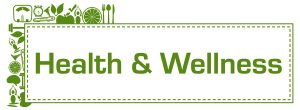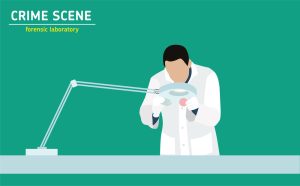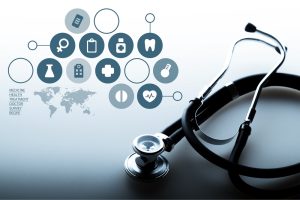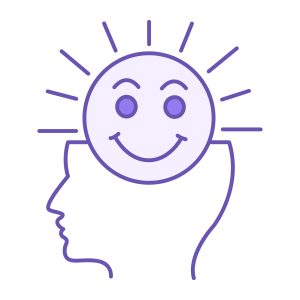By – James M. Katz, BA
Health care ethics form the moral foundation of medical practice, guiding professionals in their interactions with patients and decision-making processes. At the heart of these ethical principles lies the concept of beneficence, which emphasizes the duty to act in the best interest of patients. This fundamental principle shapes the way healthcare providers approach patient care, influencing everything from treatment choices to research practices.
The principle of beneficence in health care ethics goes hand in hand with other key concepts such as patient rights, informed consent, and justice in medical ethics. It plays a crucial role in shaping ethical healthcare practices and helps to balance the complex relationships between patients, healthcare providers, and the broader medical system. As the healthcare landscape continues to evolve, understanding and applying the principle of beneficence remains essential to maintain trust, ensure patient well-being, and uphold the integrity of the medical profession.
Key Takeaways
- Beneficence means acting in the best interest of the patient to promote their well-being and health.
- Balancing beneficence with other ethical principles like justice and autonomy can be challenging for healthcare providers.
- Examples of beneficence in practice include providing pain relief, preventing harm, and promoting overall health.
- Ethical dilemmas often arise when beneficence conflicts with other principles, requiring careful consideration and judgment.
- Understanding and applying beneficence is crucial for building trust and effective communication in patient-provider relationships.
Definition of Beneficence in Healthcare
Origin and Meaning
Beneficence, a fundamental principle in healthcare ethics, has its roots in moral philosophy and has evolved to become a cornerstone of medical practice. The term “beneficence” connotes acts of mercy, kindness, generosity, and charity, suggesting altruism, love, and humanity. In the context of healthcare, beneficence is defined as the obligation of healthcare professionals to act for the benefit of their patients . This principle goes beyond simply avoiding harm and actively encourages practitioners to help others and promote their well-being.
The concept of beneficence has been embraced by various ethical theories throughout history. Utilitarian thinkers, for instance, see beneficence as the foundation for causing the greatest benefit for all. In modern healthcare ethics, beneficence is intertwined with humanism, recognizing the immutable rights of all persons to life and liberty. This principle strives for the best care while avoiding harmful actions, extending into a generous, supererogatory category.
Relationship to Other Ethical Principles
Beneficence is closely related to other ethical principles in health care ethics, particularly non-maleficence. While non-maleficence focuses on avoiding harm, beneficence takes a step further by actively promoting good. These two principles are often considered together, as they both aim to improve people’s well-being and health. However, the distinction lies in the fact that beneficence is an ethical commitment to take positive steps to help patients, not merely to prevent harm.
In nursing ethics, beneficence is considered one of the four main ethical principles, alongside autonomy, justice, and non-maleficence. It is often referred to as the “moral heart of the nursing profession,” emphasizing that nurses should provide care with the sole goal of benefiting the client. This principle requires healthcare professionals to balance potential benefits and risks of any proposed treatment, ensuring that the overall expected outcome is positive and outweighs any risks.
Examples in Medical Practice
In practical terms, beneficence manifests in various ways within healthcare settings:
1. Providing high-quality patient care: This includes preventive care, necessary treatments, and follow-up care.
2. Respecting patient autonomy: Healthcare professionals show beneficence by respecting patients’ wishes regarding their care.
3. Patient advocacy: Nurses and other healthcare providers can demonstrate beneficence by advocating for their patients within the healthcare system and the larger community.
4. Balancing risks and benefits: Practitioners must consider the risk-benefit ratio when making treatment decisions. For example, a surgical procedure to remove a ruptured appendix carries risks of pain and scarring but is ultimately beneficial in preventing sepsis or hemorrhage.
5. Promoting patient-centered care: Healthcare workers are encouraged to provide care that includes attention to patient priorities and preferences.
6. Preventing harm and removing conditions that could cause harm: This aspect of beneficence aligns closely with the principle of non-maleficence.
7. Helping persons with disabilities and rescuing persons in danger: These actions exemplify the proactive nature of beneficence in healthcare.
Implementing the principle of beneficence can be challenging, as it requires a clear definition of “what is good for a patient”. This definition may vary depending on individual circumstances, reminding healthcare professionals that what is beneficial for one patient may not necessarily be ideal for another. Therefore, beneficence ensures that healthcare professionals consider individual circumstances and tailor their approach to each patient’s unique needs and preferences.
The Importance of Beneficence
The principle of beneficence plays a crucial role in healthcare ethics, emphasizing the responsibility of healthcare practitioners to act in their patients’ best interests. This ethical commitment goes beyond simply avoiding harm and actively encourages professionals to improve patient well-being and health. The importance of beneficence in healthcare can be understood through its impact on patient well-being, trust in healthcare, and professional responsibility.
Patient Well-being in Health Care Ethics
Beneficence is fundamental to ensuring patient well-being. It requires healthcare providers to present the best possible course of action for patients, taking into account their concerns and wishes. This principal guide practitioner to find the least obtrusive and most beneficial solution to a patient’s issue, reducing the chance of risky or unnecessary procedures and treatments.
In nursing care, beneficence is interpreted as ensuring the provision of care with positive benefits and protecting patients. Nurses are expected to ignore personal interests for the needs of the patients, their well-being, and preferences. This commitment extends to providing equitable care based on need and without discrimination for all patients. The principle of beneficence also emphasizes the importance of respecting the needs, values, and preferences of patients and their families. Healthcare professionals should be aware of these needs by documenting the life history of patients, as their needs and interests are shaped by religious, cultural, and social factors.
Trust in Healthcare
Beneficence plays a crucial role in building and maintaining trust between health care ethics providers and patients. By adhering to a strong ethical framework that includes beneficence, healthcare practitioners can increase patients’ willingness to trust them, potentially saving lives. This trust allows for more open and candid communication between healthcare providers and patients, especially in sensitive situations such as end-of-life care or emergency treatment decisions.
The application of beneficence in healthcare can lead to increased trust from patients and their families, particularly in end-of-life and palliative care situations. Truth-telling, as an aspect of beneficence, is considered essential in building trust and effective communication. Healthcare providers should balance truth-telling with patient autonomy to achieve treatment that is effective and based on the patient’s interests.
Professional Responsibility
Beneficence underscores the professional responsibility of healthcare providers. It is considered a defining responsibility of practicing physicians to make decisions on patient care that go beyond selecting appropriate treatments. Healthcare professionals have an ethical obligation to benefit the patient, avoid or minimize harm, and respect the patient’s values and preferences.
In nursing management, the focus of beneficence is on providing safe, effective, timely, efficient, fair, and patient-centered care combined with accuracy, kindness, and staff collaboration. To fulfill this responsibility, healthcare professionals need to be equipped with ethical knowledge and insight.
The principle of beneficence also extends to the broader healthcare system. By having an ethical framework that encompasses an entire facility, healthcare workers can feel assured that their co-workers are operating with the same intent. This allows for easier communication between co-workers, fewer misunderstandings, and a greater sense of mutual trust in each other’s decisions.
It’s worth noting that while physicians’ beneficence conforms to moral rules and is altruistic, it can also be considered a form of reciprocity for the debt to society for education (often subsidized by governments), ranks and privileges, and to the patients themselves (learning and research opportunities).
In conclusion, the importance of beneficence in healthcare cannot be overstated. It ensures that patient well-being remains at the forefront of medical practice, fosters trust between healthcare providers and patients, and guides professionals in fulfilling their ethical responsibilities. By integrating beneficence into all aspects of healthcare, from individual patient interactions to system-wide policies, the medical field can continue to uphold its commitment to promoting health and well-being for all.
Beneficence vs. Paternalism
Distinguishing the Two
Beneficence and paternalism are two concepts that play significant roles in healthcare ethics, yet they often find themselves at odds. Beneficence, as a fundamental principle, emphasizes the obligation of healthcare professionals to act for the benefit of their patients. It supports a number of moral rules, including protecting and defending the rights of others, preventing harm, removing conditions that will cause harm, helping persons with disabilities, and rescuing persons in danger.
Paternalism, on the other hand, involves making decisions based on what the physician discerns to be in the patient’s best interests, even for patients who could make decisions for themselves. This approach assumes that physicians always know better than the patient what is good for them. Paternalism can be further divided into soft and hard forms. Soft paternalism occurs when a physician acts on grounds of beneficence when the patient is nonautonomous or substantially nonautonomous, such as in cases of cognitive dysfunction due to severe illness, depression, or drug addiction. Hard paternalism, which is ethically indefensible, involves actions by a physician intended to benefit a patient but contrary to the voluntary decision of an autonomous patient who is fully informed and competent.
Potential Conflicts
The conflict between beneficence and paternalism arises when the physician’s perception of what is best for the patient clashes with the patient’s own wishes or values. This tension has become more pronounced in recent decades with the emphasis on respect for patient autonomy. The bioethics movement has highlighted principles of “respect for persons” and “respect for autonomy,” challenging the traditional paternalistic approach.
Critics of paternalism argue that when a provider makes critical decisions for a patient or withholds important information to influence a patient’s decisions without involving them in the process, the provider assumes to know what type of life people in general should live and want to get out of life. This assumption extends beyond the scope of medical expertise and may not align with the patient’s own life goals and values.
Finding the Right Balance
To reconcile the contrasting paradigms of beneficence and respect for autonomy, some ethicists propose a middle-ground approach. Pellegrino and Thomasma argue for a concept of “beneficence-in-trust,” which combines aspects of paternalism and autonomy. This model suggests that beneficence should guide the provider’s actions toward the patient, but included in that beneficence is a respect for the autonomy and values of the patient.
In practice, this balanced approach involves engaging the patient in a discussion about how the diagnosis and treatment options fit in with their health-related goals and life goals. It recognizes that ill patients may be in a weakened state that prevents them from being fully autonomous, and they place trust in the beneficence of the provider.
The choice between technical models, where providers present all facts and options without guidance, and various middle-ground models should be made on a case-by-case basis, depending on the needs and wishes of the particular patient. This flexibility allows for a more nuanced approach to the provider-patient relationship, acknowledging that there may be no one “ideal” model for all situations.
In some jurisdictions, such as Croatia, there is an interesting dynamic where medical paternalism appears to be trumped by autonomy in policy, yet many individual patients still expect and even urge doctors to be paternalistic. This attitudinal conflict presents a challenge for practicing physicians and highlights the need for a more nuanced understanding of the interplay between beneficence and paternalism in healthcare ethics.
Applying Beneficence in Clinical Decision-Making
Assessing Risks and Benefits
The principle of beneficence in health care ethics requires practitioners to act in the best interests of their patients. This involves carefully weighing the potential risks and benefits of any proposed treatment or intervention. Healthcare professionals must make efforts to secure their patients’ well-being, which goes beyond simply avoiding harm. This obligation includes two fundamental rules: (1) do not harm and (2) maximize possible benefits while minimizing potential harms.
To apply beneficence effectively, health care ethics providers must conduct a thorough assessment of relevant data, including alternative ways of obtaining the desired benefits. This process presents both an opportunity and a responsibility to gather comprehensive information about proposed treatments or research. The assessment of risks and benefits is crucial in determining when it is justifiable to seek certain benefits despite the associated risks, and when the benefits should be foregone due to excessive risks.
Considering Patient Values
Beneficence requires healthcare practitioners to consider each patient’s individual goals, needs, and experiences before making decisions. This approach recognizes that what is beneficial for one patient may not be ideal for another. Healthcare providers should learn about and take into account a patient’s background, religious beliefs, and life experiences to determine what is best for them. Even small considerations can have significant impacts on a patient’s comfort level and treatment success.
It’s important to note that beneficence should not be confused with paternalism. While beneficence aims to act in the patient’s best interests, it should not override patient autonomy. Healthcare providers must strike a balance between their professional judgment and the patient’s preferences and values.
Collaborative Decision-Making
Applying beneficence in clinical decision-making often involves a collaborative approach between healthcare providers and patients. This process, known as shared decision-making (SDM), recognizes both the clinician as the expert-by-training and the patient as the expert-by-experience. SDM involves both parties contributing their expertise, committing to decision-making responsibility, and respecting each other’s perspectives.
To facilitate effective collaborative decision-making, healthcare providers should:
1. Communicate evidence clearly: Beneficence supports efforts to promote a patient’s understanding of the treatment options offered.
2. Address optimism bias: Patients may be overly optimistic about health risks. Providers should ensure patients fully understand both the risks and benefits of treatment options.
3. Consider vulnerability: An adequate conception of vulnerability must not only protect against harm but also minimize circumstances that prevent participants from obtaining derived benefits of research or treatment.
4. Balance ethical principles: Skilled clinicians attempt to integrate principles of respect for autonomy, justice, beneficence, and non-maleficence in their decision-making process.
5. Enhance patient autonomy: One way to act for a patient’s good is to enhance their autonomy by providing comprehensive information about treatment options.
In applying beneficence to clinical decision-making, healthcare providers must recognize that benefits do not automatically occur. It is the responsibility of the healthcare professional to consider the possible benefits expected from a particular course of action, always keeping in mind the obligation that emanates from the principle of beneficence. This approach ensures that healthcare decisions are made with the patient’s best interests at heart while respecting their autonomy and individual values.
Beneficence in Nursing Ethics
Importance of Beneficence in Nursing
Beneficence is a core principle in nursing health care ethics, emphasizing the need to do good and promote the well-being of patients. Nurses are expected to act in ways that benefit their patients, ensuring their safety and comfort. This principle is deeply rooted in the history of nursing and is recognized globally as essential to the profession. By focusing on beneficence, nurses can provide compassionate and effective care, which is fundamental to their role.
Challenges in Applying Beneficence
Despite its importance, applying beneficence in nursing can be challenging. Nurses often face situations where they must balance the benefits of a treatment against its risks and costs. Additionally, there can be conflicts between what is best for the patient and the patient’s own wishes or the wishes of their family. These dilemmas require careful consideration and ethical judgment to navigate effectively.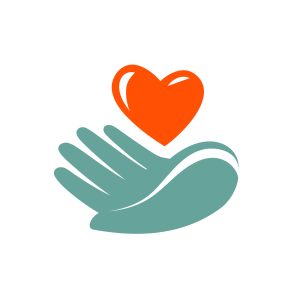
Strategies for Promoting Beneficence in Nursing
To promote beneficence, nurses can adopt several strategies. Effective communication with patients and their families is crucial, as it helps in understanding their needs and preferences. Continuous education and training in ethical principles can also equip nurses with the knowledge and skills needed to make beneficent decisions. By fostering a supportive and collaborative environment, nurses can work together to ensure that their actions consistently benefit their patients.
Challenges to Beneficence in Modern Healthcare
Resource Constraints
The principle of beneficence in health care ethics faces significant challenges due to resource limitations. Capacity strain, which occurs when demand rises relative to supply, has been associated with changes in care delivery and, in some cases, poorer outcomes among critically ill patients. Studies have shown that high ICU strain is linked to triage decisions and may be associated with ICU patient mortality. During periods of higher ICU strain, marginal patients, such as those with sepsis but not requiring vasoactive medications, are more likely to be admitted to a general ward bed than an ICU bed.
Resource constraints also affect the quality of care provided. High strain at the time of admission to ICUs is associated with reduced adherence to evidence-based practices, such as prophylaxis for venous thromboembolism. It also impacts end-of-life care, leading to shorter times to establish do-not-resuscitate status. In some circumstances, resource limitations can result in slightly higher mortality rates.
The COVID-19 pandemic has highlighted the extreme end of the capacity strain spectrum across multiple domains. It has forced healthcare systems to make operationally, financially, and ethically challenging decisions about allocating resources to non-COVID-19 care in parallel to pandemic efforts. This situation has tested the resilience of healthcare systems and their ability to maintain beneficence in the face of unprecedented challenges.
Conflicting Obligations
Healthcare professionals often find themselves caught between conflicting obligations, which can challenge the principle of beneficence. The consumerization of medicine has created pressures that may conflict with acting in a patient’s best interest. Physicians face conflicting pressures to reduce costs in some settings while raising institutional or individual incomes through prescribing or referral practices in others.
Even seemingly simple factors, such as RVU-driven throughput incentives, can impede meaningful conversations with patients or discourage exploration of health concerns beyond the immediate reason for the visit. This situation creates tension between the need for efficiency and the desire to provide comprehensive, patient-centered care.
Another significant challenge arises when physicians feel compelled to provide potentially harmful or futile treatments due to the absence of advance directives or disagreements among family members. This can result in moral distress for healthcare providers, as it conflicts with the precept to “do no harm” and creates tension with the value of respect for persons.
Technological Advancements
While technological advancements in healthcare offer numerous benefits, they also present challenges to the principle of beneficence. The cost of technology represents one of the largest challenges to organizations with respect to installation and subsequent maintenance. The difficulty in directly assessing intangible patient and cost benefits makes it challenging to justify capital expenditure on new technology.
The rapid advancement of technology can lead to ethical challenges for physicians. Medical training often emphasizes the necessity to provide the best possible medical care, which may be interpreted as utilizing the newest and most technologically advanced care. This can lead to inappropriately rapid routinization, defined as the social process that leads to the habitual use of new biomedical technology without fully considering its implications.
The technological imperative, which refers to the perceived inevitability and essential nature of new technology, can sometimes conflict with patient autonomy. It may shift the focus of healthcare from preservation and restoration under responsible autonomy to death prevention, potentially treating the patient as both “the battlefield and the prize”. This introduces a moral dilemma of using the patient as a means to meet the end of death prevention, thereby challenging one of the fundamental principles of medical ethics: autonomy.
Furthermore, the increased use of technology in healthcare has shifted central ethical questions to issues around integrity and equity on both individual and system levels. These concerns relate to challenges such as the risk of technology being biased, building on or reinforcing inequalities, and overturning traditional principles of care practice and system structure.
Beneficence in Research Ethics
Beneficence, a fundamental principle in research ethics, emphasizes the obligation to act in the best interests of research participants and society at large. This principle requires researchers to maximize potential benefits while minimizing possible harms. In the context of biomedical research, beneficence takes multifaceted forms, driving researchers to advance medical knowledge, develop innovative treatments, and enhance the overall quality of healthcare.
Protecting Research Subjects
The principle of beneficence in health research implies that researchers must make efforts to minimize risks to participants and maximize benefits to both participants and society. This ethical mandate goes beyond simply avoiding harm; it requires active efforts to secure the well-being of research subjects. Researchers must ensure that their studies do not pose undue risks to participants and that any potential risks are outweighed by the benefits.
To uphold this principle, researchers must:
1. Conduct thorough risk assessments
2. Implement stringent safety protocols
3. Continuously monitor the research process
4. Protect participants from potential harm while avoiding the loss of substantial benefits
Balancing Scientific Progress and Individual Welfare
One of the key challenges in research ethics is striking a balance between advancing scientific knowledge and protecting individual participants. The Belmont Report acknowledges that learning what is harmful may require exposing persons to the risk of harm. However, it emphasizes that no risk should be taken if it is not commensurate or proportional to the benefit of the research study.
Researchers and ethics committees must carefully weigh the potential benefits against the risks, considering factors such as:
1. The type of study
2. The characteristics of potential participants
3. The probability and magnitude of potential risks and benefits
It is crucial to recognize that while benefits may accrue to society through the development of generalized knowledge, risks are borne by individual subjects. Therefore, researchers must design their protocols to maximize the probability and magnitude of benefits to both individual research subjects and society while minimizing the probability and magnitude of injury to participants.
Ethical Review Processes
To ensure adherence to the principle of beneficence, research involving human subjects must undergo rigorous ethical review processes. Institutional Review Boards (IRBs) or Research Ethics Committees (RECs) play a critical role in evaluating research protocols, assessing potential risks, and ensuring that studies adhere to ethical standards.
The ethical review process typically involves:
1. Review and approval: Before a study commences, the IRB reviews the research proposal to ensure it adheres to ethical guidelines. This includes evaluating the risks and benefits, the process of obtaining informed consent, and measures for maintaining confidentiality.
2. Monitoring and compliance: IRBs also monitor ongoing research projects to ensure compliance with ethical standards. They may require periodic reports and can conduct audits to ensure ongoing adherence to ethical principles.
3. Handling ethical violations: In cases where ethical standards are breached, IRBs have the authority to impose sanctions, which can range from requiring modifications to the study to completely halting the research project.
By implementing these rigorous review processes, the research community strives to uphold the principle of beneficence, ensuring that scientific progress is achieved while safeguarding the rights and welfare of research participants.
Teaching and Promoting Beneficence
Medical Education
The principle of beneficence plays a crucial role in medical ethics education, emphasizing the responsibility of healthcare providers to act in the best interests of patients. However, there are concerns that current medical ethics education may not adequately foster future physicians’ commitment to beneficence. To address this, medical education should focus on developing a comprehensive understanding of how beneficence applies in various healthcare contexts, including the use of emerging technologies like artificial intelligence (AI).
Medical students often enter their education with a pre-reflective commitment to beneficence, which should be nurtured and developed over time alongside their clinical reasoning skills. This commitment needs to be given greater relative moral weight as students’ progress through their ethics education, without sacrificing it to the principle of patient autonomy.
In the context of AI in medicine, beneficence-focused education should emphasize:
1. Critical assessment of AI systems’ capabilities and limitations
2. Understanding the accuracy, reliability, and generalizability of AI-based applications
3. Evaluating the impact of AI on clinical workflows and resource utilization
4. Identifying and mitigating potential harms associated with AI use, such as biased recommendations or erroneous diagnoses
Institutional Policies
Healthcare institutions play a vital role in promoting beneficence through their policies and practices. These policies should ensure that care provides a net benefit and that patients are protected. Institutional policies should focus on:
1. Providing safe, effective, timely, efficient, fair, and patient-centered care
2. Combining accuracy, kindness, and staff collaboration in care delivery
3. Supporting nursing staff in decision-making that benefits patients
4. Balancing ethical principles of beneficence and justice to present the best possible care for patients while ensuring equitable care for the entire population
Institutions should also address potential conflicts between beneficence and other ethical principles, such as autonomy. While beneficence is fundamental, it should not override patient autonomy without good reason [46, 61]. Policies should guide healthcare professionals in navigating these ethical dilemmas, emphasizing the importance of considering patients’ needs, preferences, and values [25, 64].
Professional Development
Ongoing professional development is essential for healthcare providers to maintain and enhance their commitment to beneficence. This development should focus on:
1. Equipping healthcare professionals with ethical knowledge and insight
2. Enhancing understanding of cultural, social, and ethical factors that influence patient care
3. Developing skills to balance beneficence with other ethical principles, such as autonomy and justice [34, 35]
4. Fostering a deep understanding of beneficence in the context of emerging technologies and evolving healthcare practices
Professional development should also address the challenges healthcare providers face when applying beneficence in practice. For instance, nurses should understand that benevolent actions may not always benefit patients and may sometimes conflict with preserving patient autonomy [16, 22, 25, 26, 34, 37, 38, 39]. Training should help healthcare professionals navigate these complex situations, emphasizing the importance of considering individual patient circumstances and preferences.
By focusing on these areas in medical education, institutional policies, and professional development, the healthcare system can strengthen its commitment to beneficence, ensuring that patient well-being remains at the forefront of medical practice.
Ethical Dilemmas Involving Beneficence and Justice
Conflict Between Beneficence and Justice
In healthcare, beneficence means doing good for the patient, while justice means treating everyone fairly. Sometimes, these two principles clash. For example, a doctor might want to give the best possible care to a patient, but there might not be enough resources to do so for everyone. This creates a tough situation where the doctor has to decide who gets what kind of care.
Case Studies of Ethical Dilemmas
Imagine a hospital with only one ventilator left. Two patients need it to survive. One is a young athlete, and the other is an elderly person. The doctors have to choose who gets the ventilator. This is a real-life example of a conflict between beneficence and justice. The doctors want to help both patients, but they can only choose one.
Approaches to Resolving Conflicts
To solve these conflicts, healthcare providers often use ethical guidelines. They might consider factors like the patient’s age, overall health, and chances of recovery. Some hospitals have ethics committees to help make these tough decisions. The goal is to find a balance between doing good for individual patients and being fair to everyone.
Beneficence in Specialized Medical Fields
Beneficence in Emergency Medicine
In emergency medicine, the principle of beneficence is crucial. Doctors must act quickly to save lives and reduce suffering. They have a duty to do what is best for the patient, even in high-pressure situations. This might mean making tough decisions, like performing life-saving procedures without the patient’s consent if they are unable to give it. The goal is always to promote the patient’s well-being and ensure their safety.
Beneficence in Sports Medicine
In sports medicine, beneficence involves helping athletes recover from injuries and improve their performance. Doctors and therapists work to ensure that treatments not only heal injuries but also enhance the athlete’s overall health. They must balance the desire to get athletes back in the game quickly with the need to ensure long-term health and prevent future injuries. The focus is on doing what is best for the athlete’s body and career.
Beneficence in Neurology
Neurology deals with complex and often serious conditions affecting the brain and nervous system. Here, beneficence means providing treatments that improve the quality of life for patients with neurological disorders. This can involve managing symptoms, slowing disease progression, and offering support for both patients and their families. The aim is to enhance the patient’s overall well-being and help them lead as normal a life as possible.
Impact of Beneficence on Patient-Provider Relationships
Building Trust Through Beneficence
Beneficence plays a key role in building trust between patients and healthcare providers. When doctors and nurses act in the best interest of their patients, it shows they care about their well-being. This trust is essential for effective treatment and patient satisfaction. Patients are more likely to follow medical advice and share important information when they trust their healthcare providers.
Communication Strategies for Beneficence
Good communication is vital for beneficence. Healthcare providers should listen to their patients and explain treatments clearly. This helps patients understand their options and feel more involved in their care. When patients feel heard and understood, they are more likely to trust their providers and follow through with treatment plans.
Long-term Outcomes of Beneficent Care
Beneficent care leads to better long-term outcomes for patients. When healthcare providers focus on doing good and preventing harm, patients experience better health and well-being. Over time, this approach can lead to fewer hospital visits and a higher quality of life. Beneficence not only helps patients recover but also promotes lasting health benefits.
Global Perspectives on Beneficence
Beneficence in Different Cultures
Beneficence, the act of doing good, is a core principle in medical ethics worldwide. However, its interpretation and application can vary greatly across different cultures. In some societies, the emphasis is on community well-being, while in others, individual autonomy is prioritized. Understanding these cultural differences is crucial for healthcare providers working in diverse environments. For instance, in many Asian cultures, family consent is often sought for medical decisions, reflecting a collective approach to beneficence. In contrast, Western cultures may focus more on individual patient rights and autonomy.
International Guidelines on Beneficence
International guidelines aim to create a common framework for applying beneficence in healthcare. Organizations like the World Health Organization (WHO) and the International Council of Nurses (ICN) provide guidelines that emphasize the importance of beneficence in promoting global health. These guidelines often stress the need for balancing beneficence with other ethical principles like justice and autonomy. They also highlight the importance of cultural sensitivity and the need to adapt practices to local contexts.
Case Studies from Around the World
Case studies from various countries illustrate how beneficence is applied in different healthcare settings. In India, for example, community health programs often focus on preventive care and education, aiming to benefit the largest number of people. In contrast, in the United States, beneficence might be demonstrated through advanced medical interventions and personalized care plans. These case studies show that while the principle of beneficence is universal, its application can be highly context-specific, influenced by local values, resources, and healthcare systems.
Conclusion
The principle of beneficence has a profound influence on healthcare ethics, shaping how medical professionals approach patient care and make crucial decisions. It underscores the duty to act in the best interests of patients, balancing potential benefits and risks while respecting individual autonomy. This ethical foundation extends beyond individual patient interactions to impact research practices, institutional policies, and the broader healthcare system.
To wrap up, the ongoing challenges in modern healthcare, such as resource constraints and technological advancements, put the principle of beneficence to the test. However, its continued emphasis in medical education and professional development ensures that patient well-being remains at the heart of healthcare. By fostering a deep understanding of beneficence and its application in various contexts, the medical community can uphold its commitment to providing compassionate, effective, and ethically sound care in an ever-changing healthcare landscape.
If you’re interested in learning more about Health Care Ethics and becoming a Certified Health Care Ethics Consultant then please visit our Online Health Care Ethics Program. It consists of 5 online healthcare ethics courses. They are all on open enrollment and self-paced, meaning you can start whenever you want and go at your own pace. All you’re doing for these courses is studying the textbooks then taking a 1 final, open book and untimed exam per course. It has never been easier to earn your certification in Healthcare Ethics! For full information please follow this link.
FAQs
- What are the four fundamental ethical principles in healthcare? The four cornerstone principles of medical ethics are Beneficence (promoting good), non-maleficence (avoiding harm), Autonomy (respecting the patient’s right to make decisions), and Justice (ensuring fairness).
Can you describe the three components of beneficence? Beneficence encompasses several key aspects including the obligation to prevent and remove harm, the duty to weigh and balance potential benefits against risks, and the imperative to maximize possible benefits while minimizing potential harms. - What does the ethical principle of beneficence entail?
The ethical guideline of beneficence involves actions intended to benefit others, enhancing their well-being and safety. It is closely linked with the principle of nonmaleficence, which focuses on avoiding harm, as both aim to promote the welfare of individuals. - What are the benefits of adhering to the principle of beneficence?
The principle of positive beneficence not only involves actively doing good but also preventing and removing harm. It mandates the promotion and enhancement of others’ welfare, particularly in healthcare settings. - What is beneficence in medical ethics?
Beneficence means doing good and promoting the well-being of patients. It’s a core principle that guides healthcare providers to act in the best interests of their patients. - How does beneficence differ from non-maleficence?
While beneficence focuses on doing good for the patient, non-maleficence means avoiding harm. Both principles work together to ensure the best care for patients. - Can you give an example of beneficence in healthcare?
Sure! An example of beneficence is a doctor providing pain relief to a patient after surgery to improve their comfort and recovery. - What is paternalism in healthcare?
Paternalism in healthcare is when a medical professional makes decisions for a patient, believing it’s in the patient’s best interest, sometimes without the patient’s input. - Why is beneficence important in nursing?
Beneficence is crucial in nursing because it ensures that nurses act in the best interests of their patients, promoting their health and well-being. - How do healthcare providers balance beneficence and justice?
Healthcare providers balance beneficence and justice by ensuring that the best possible care is given to patients while also fairly distributing resources and treatments across the population.
Research Articles:
Beneficence and Wellbeing: A Critical Appraisal. McCullough, L. B. (2020). The American Journal of Bioethics, 20(3), 65–68.
Access link here
Toward a More Credible Principle of Beneficence. Pandit, P. J. Indian Counc. Philos. Res. 38, 407–422 (2021).
Access link here
Medical Beneficence, Nonmaleficence, and Patients’ Well-Being. Lynn A. Jansen. The Journal of Clinical Ethics. Volume 33, Number 1 Spring 2022
Access link here
Translating the Principle of Beneficence into Ethical Participatory Development Research Practice. Michelle R. Brear, Rebecca Gordon. Journal of International Development. Volume33, Issue 1, January 2021, Pages 109-126
Access link here




